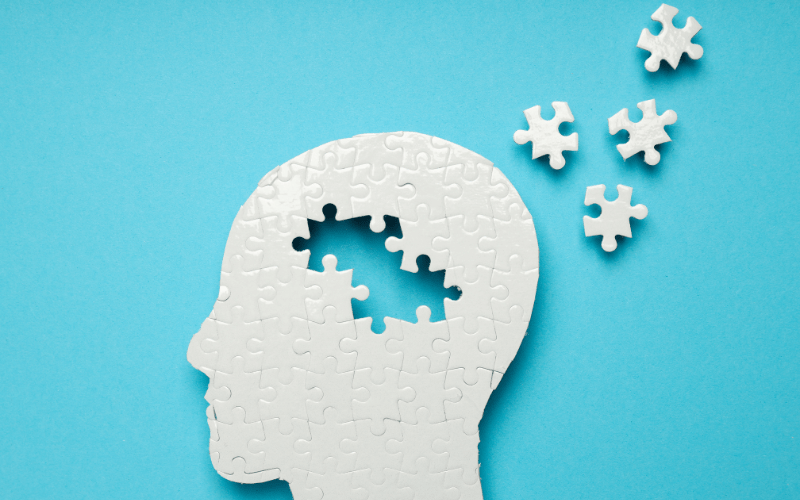EMDR Therapy and TBI
Guest Blog Post by Dr. Michelle Morrissey
 Tell us a little about you, your experience becoming an EMDR therapist, and your experience with traumatic brain injury (TBI) and/or concussions.
Tell us a little about you, your experience becoming an EMDR therapist, and your experience with traumatic brain injury (TBI) and/or concussions.
A professor in my master’s program was a Vietnam veteran and told me about EMDR therapy. After having a couple of sessions, I was hooked and knew I had to be trained; then, I had to teach others. I graduated with honors with both of my degrees. I have won awards for my work; I have been published in the Journal of EMDR Practice and Research, was awarded the EMDRIA dissertation grant, and have written a book on interweaves. I am currently in the process of writing a book on using EMDR therapy for brain injuries. I have developed several advanced EMDR programs taught in the U.S., Canada, the U.K., Australia, New Zealand, etc., and provide consultation as needed. I love learning as much as possible about the brain and EMDR therapy. I treat cradle-to-grave and have provided EMDR therapy for brain-injured clients since 2009.
Can you help us understand any differences (if there are any) between someone who has experienced a traumatic brain injury (TBI) and someone who has experienced a concussion?
Concussions are considered brain injury; they are just designated as mild brain injury. There are three designations: mild, moderate, and severe. Mesfin et al. (2023) state that doctors use the GCS (Glasgow Coma Scale) to measure the following three functions and use the points to determine the injury classification. Brain injury patients with GCS scores of 13-15 are classified as mild, including most traumatic brain injury patients. Patients with a GCS score of 9-12 are considered to have a moderate traumatic brain injury, while patients with a GCS score of 8 and below are classified as having a severe traumatic brain injury. Some common symptoms include:
- Eye Opening (E): 4-spontaneous, 3-to voice, 2-to pain, 1-none
- Verbal Response (V): 5-normal conversation, 4-oriented conversation, 3-words, but not coherent, 2-no words, only sounds, 1-none
- Motor Response (M): 6-normal, 5-localized to pain, 4-withdraws to pain, 3-decorticate posture, 2-decerebrate (abnormal flexion, rigidity, flexor posturing, or decorticate response—-meaning abnormal posturing in which a person is stiff with bent arms, clenched fists, and legs held out straight).
Is there a potential difference in using EMDR therapy with someone coping with concussion or TBI?
The difference in using EMDR is that depending on the severity of the brain injury, EMDR reprocessing may need to start with EMD, then go to EMDr because EMDR can open too many neural networks, causing overwhelm when their brains are already overwhelmed. Here’s a brief explanation. The founder of EMDR, Dr. Francine Shapiro, started this therapy in 1987 as EMD because she recognized how eye movements (EM) desensitized emotions and/or images. EMDR focuses on reprocessing specifically on the event/target at hand and not allowing the neural connections to link to other neural networks, thereby minimizing the potential for dysregulation or overwhelm. EMDR considered a more comprehensive range of reprocessing, would be used on this population after EMD and EMDr have decreased the SUD and emotional reaction to the event, thereby allowing neural networks to link up together for a complete reprocessing of the situation.
The main thing to remember when doing EMDR with brain injuries is the number and type of injuries someone has endured. EMDR changes according to the number of TBIs by complicating reprocessing, much like Complex PTSD complicates EMDR reprocessing. More numerous, or a cluster of TBIs, impede reprocessing by creating a more difficult time generalizing to other TBI events without getting overwhelmed. Many times, each injury has to be reprocessed separately.
Many different types of brain injuries should be asked of everyone during Phase 1. One would be hypoxia/anoxia, in which there are less than ideal oxygen levels or a lack of oxygen (examples might include a cord wrapped around a neck, sleep apnea, choking, near drowning, stroke, etc.). Another injury to ask about would be diffuse axonal injuries that occur in the white matter of the brain. When axons (the long tails of neuron cells) break, they release neurochemicals of sodium, potassium, and calcium; then receptors pick up too much of this, which can cause mood dysregulation. There might be acquired brain injuries from illnesses like COVID-19, Parkinson’s, MS, and Huntington’s. In addition, closed or open brain injuries can occur from being shaken violently, strikes/blows, twisting/shearing, fractures, brain surgeries, etc. These different types of TBIs change the EMDR treatment approach, not by changing the EMDR phases themselves but by how one approaches them. For example, if someone has had several TBIs impacting the occiput, visual images that might surface during reprocessing can cause eye aches, headaches, and inundation of visual memories. When this happens, a different type of bilateral stimulation BLS from another processing center and/or speed is used for EMDR (changing to auditory to tactile) as it shifts where processing occurs and makes it more manageable for clients.
How can EMDR therapy help people with TBIs? What successes have you seen?
EMDR therapy can help sleep, balance, and regulate emotions like anger, irritability, sadness, and fear. EMDR helps cognitive deficits due to processing speed issues, inability to find the words they want to say/use, attention, headaches, dizziness, fatigue, anxiety, and depression.
As for successes, I have had clients report that they were no longer suicidal, depressed, or anxious; they were able to return to school or work; they were able to sleep more than a couple of hours; they weren’t getting lost anymore when they were driving, they needed less seizure medication or psych medication, and they felt like they had their lives back.
What types of cautionary measures would you like to mention regarding EMDR therapy with clients who have TBIs?
EMDR therapists who work with brain injuries must get additional training and receive consultation from people who have used EMDR with this population. The client’s symptoms might worsen, so therapists should work under their scope of practice. Some critical cautions are:
- Refrain from starting EMDR reprocessing with a Big T trauma
- There may be a need for more Interweaves than usual
- There may be a need to use EMD on parts of an incident before you segue to EMDr or EMDR
- There may be a need to reprocess targets more than once
- There will likely be a need to use a slower rate of bilateral stimulation (BLS) or dual attention stimulation (DAS) speed
- And the therapist may need to use a different form of DAS as using eye movements (EMs) may cause headaches or eye aches.
Are there any myths you would like to bust about using EMDR therapy with these clients?
Yes, there are many myths, but a couple I would like to dispel is:
- Myth: You can’t use EMDR to treat people with brain injuries. My experience: I began treating people (teens/adults) with brain injuries in 2009. They all have had success, with the majority of symptoms going away.
- Myth: You can use the standard EMDR protocol on people with brain injuries. My experience: I have not found this to be the case. You need to make/follow the TBI adaptations so those with brain injuries can reprocess and release the trauma allowing their brains to heal.
- Myth: Any basic EMDR-trained therapist can use EMDR on someone with a brain injury without extra training or consultation. My experience: Using EMDR with this population requires additional skills and knowledge beyond the EMDR therapy basic training. An EMDR therapist without additional training takes a risk: they may get lucky treating someone with one mild brain injury, or they may make matters worse. A mother of a teenager, from another state, contacted me after an EMDR therapist without specialized training in brain injuries jumped in using EMDR on the worst event. The therapist used eye movements (EMs), causing her child to hear and feel things that weren’t there, resulting in the child being hospitalized.
- Myth: EMDR doesn’t work on a brain injury that happened years ago; you can treat it immediately after it happened. My experience: I have treated people whose injuries occurred 30 years ago, and EMDR therapy still helps. However, there seems to be an ideal time frame to treat a brain injury, not immediately after the injury. The brain needs time to heal (decrease inflammatory response to protect the brain) before you can begin Phase 4. What I have found to work is by the time I do their intake assessment, treatment plan, Phase 1 and 2, the client is around the month mark. Then, I start treating small t’s and work up to Big T’s. It is a process that requires patience and time not to make things worse for clients.
Any specific complexities or difficulties that people with TBIs deal with that other populations may not?
Yes, people dealing with traumatic brain injuries report not being believed by doctors/neurologists who claim to specialize in TBIs because nothing showed up on the Xray, CT, or MRI (these images only detect fractures or brain bleeds. They cannot detect microstructure damage to the brain). Also, I have encountered clients hearing that women don’t get brain injuries, that their spouses/parents don’t believe they could still have symptoms three months after the injury, or that the symptoms showed up a couple of months after the brain injury. Clients have heard that the event wasn’t traumatic, so how is it that they have a traumatic brain injury? In addition, younger clients with brain injuries might hear the message that teenagers are moody and isolated; if they weren’t like that before the brain injury, these symptoms are from the brain injury.
How might these complexities or difficulties affect therapy?
First, clients who weren’t properly diagnosed or weren’t believed may have developed negative beliefs about themselves that can block EMDR reprocessing. Therapists may have to use more interweaves to move things along.
Second, EMDR therapists have to have an understanding of what occurs in the brain. There are two types of brain matter: white and grey. White matter is the brain’s deeper structures communicating between different grey matter areas and the rest of the body. It brings information from the cell body back to the cerebral cortex. Grey matter: this is where processing is concluded. It sends electrical signals away from the cell body. Reduction in grey matter and the hippocampus (that can/usually occur with TBIs and PTSD) can severely impair brain functioning and processing speed. This can impact memory integration, emotions, thoughts, and self-awareness. This impairment affects responsiveness to EMDR therapy and CBT.
Thirdly, therapists need to have a basic understanding of the different speeds (Hz) of processing in different regions of the brain to conceptualize what speed you may need to use with EMDR dual attention stimulus (DAS), what interweaves might be helpful, and how to alleviate self-blame and guilt. Research has shown that the speed with which EMDR is delivered (especially with this population) needs to be slower than Dr. Francine Shapiro originally theorized. She theorized that higher speeds are required to reprocess, but this can bring up too much information too fast, flooding these clients. The research shows that a slower rate of DAS (the alternating aspect of reprocessing which can occur via eye movements, auditory tones, or tactile stimulation, such as alternating hand taps) can act as a ‘trickle charger’ to allow the brain regions (hippocampus, thalamus, cerebral cortex, etc.) to come back online. Pagani et al., (2012, 2013) assert that neuronal excitation occurs at 1.5-2 Hz during EMDR therapy. This low-frequency stimulation affects the brain’s state during EMDR therapy and is similar to how memories are edited during short-wave sleep (SWS). EMDR has shown documented changes in brain structures and functions making, “… EMDR the first psychotherapy with a proven neurobiological effect” (Pagani et al., 2013). Neuronal assemblies within assorted regions of the brain operate at different frequencies. The frequencies can range from 1 Hz to 40 Hz. The frequency of Slow Wave Sleep occurs around .75 Hz and is the “off-line” time when information is transferred from the hippocampus to the neocortex (Born & Wilhelm, 2012). Bergmann (2010), has noted that low-frequency stimulation has weakened limbic synapses that have been associated with the process of erasing or changing memories. He also suggested that the low-frequency stimulation of 1-3 Hz is applied during EMDR. While, Pagani et al., (2012, 2013) assert that neuronal excitation occurs at 1.5-2 Hz during EMDR therapy.
What multicultural considerations might EMDR therapists need to consider regarding EMDR therapy with people experiencing TBI?
The considerations I have seen across cultures regarding brain injuries are disparities between gender and age. The perceptions I’ve seen on gender have been that men are more apt to get brain injuries, so women, like women’s health issues, have been less researched and less understood, whereby women are less likely to be believed by medical professionals, spouses, or family members. They have been deemed nervous, anxious, or menopausal, and their symptoms have been disregarded. The perception about age is that kids are adaptable or moody teenagers. They will get over this, or their behavior should be expected at their age. If there has been a drastic change in moods or behaviors days or months after a brain injury, they aren’t moody teens or anxious women. Their sleep issues, depression, and anxiety directly result from their brain injury.
What is your favorite free resource to suggest to other EMDR therapists on this topic?
I’ve put together a brief information video on Brain Injuries and EMDR on YouTube here: https://youtu.be/zgjfoILylXg?si=jNotDOtEkHhBpcoD . In addition, two podcasts I’m happy to suggest:
- Notice That Podcast. Episode 57: Interview with Dr. Morrissey
- Let’s Talk EMDR Podcast. Episode 13 Season 1 2022: EMDR Therapy and Traumatic Brain Injury (TBI) with Dr. Michelle Morrissey
What would you like people outside the EMDR community to know about EMDR therapy with TBIs?
That it works wonderfully to reestablish a balanced brain, and when EMDR therapy is done correctly, you, your spouse, your parent, or your child can get their lives back.
Dr. Michelle Morrissey is EMDRIA Certified, an EMDR Consultant and EMDR Trainer. Through her organization The Morrissey Institute, she provides therapy services, EMDR consultation services, EMDRIA Approved EMDR Basic Trainings and EMDR Advanced Training. Dr. Morrissey has expertise in treating depression, anxiety, PTSD, phobias, complicated grief, post-concussive syndrome and traumatic brain injuries (TBIs). She teaches an EMDRIA Approved advanced training How to Use EMDR for Brain Injuries that trains EMDR therapists how to decipher myth from fact, learn the different types of TBI’s, recent research, and how to use EMDR techniques effectively in order to treat this population.
References
Bergmann, U. (2010). EMDR’s neurobiological mechanisms of action: A survey of 20 years of searching. Journal of EMDR Practice and Research, 4(1), 22-42. Open access: https://doi.org/10.1891/1933-3196.4.1.22
Bergmann, U. (2012). Neurobiological foundations for EMDR practice. New York, NY: Springer.
Bergmann, U. (2019). Neurobiological foundations for EMDR practice (2nd ed.). New York, NY: Springer Publishing Co.
Born, J., & Wilhelm, I. (2012). System consolidation of memory during sleep. Psychological Research, 76(2), 192–203. Open access: https://doi.org/10.1007/s00426-011-0335-6
Mesfin, F. B., Gupta, N., Hays Shapshak, A., & Taylor, R. S. (2023). Diffuse axonal injury. StatPearls. Treasure Island, FL: StatPearls Publishing. Retrieved from: https://www.ncbi.nlm.nih.gov/books/NBK448102/
Pagani, M., Di Lorenzo, G., Verardo, A.R., Nicolais, G., Monaco, L., Lauretti, G., Russo, R., Niolu, C., Ammaniti, M., Fernandez, I., & Siracusano, A. (2012). Neurobiological correlates of EMDR monitoring – an EEG study. PLoS ONE, 7(9), 1-12. Open access: https://doi.org/10.1371/journal.pone.0045753
Pagani, M., Hogberg, G., Fernandez, I., & Siracusano, A. (2013). Correlates of EMDR therapy in functional and structural neuroimaging: A critical summary of recent findings. Journal of EMDR Practice and Research, 7(1), 29-38. Open access: http://dx.doi.org/10.1891/1933-3196.7.1.29
Resources on EMDR and TBI
Peer-Reviewed Articles
Gil-Jardine, C., Al Joboory, S., Tortes Saint Jammes, J., Durand, G., Ribereau-Gayon, R., Galinski, M., Salmi, L-R., Revel, P., Regis, C. A., Valdenaire, G., Poulet, E., Tazarourte, K., & Lagarde, E. (2018). Prevention of post-concussion-like symptoms in patients presenting at the emergency room, early single eye movement desensitization, and reprocessing intervention versus usual care: Study protocol for a two-center randomized controlled trial. Trials, 19:555. Open access: 10.1186/s13063-018-2902-2
Gil-Jardine, C., Evrard, G., Al Joboory, S., Tortes Saint Jammes, J., Masson, F., Ribereau-Gayon, R., Galinski, M., Salmi, L-R., Revel, P., Regis, C. A., Valdenaire, G., & Lagarde, E. (2018). Emergency room intervention to prevent post concussion-like symptoms and post-traumatic stress disorder. A pilot randomized controlled study of a brief eye movement desensitization and reprocessing intervention versus reassurance or usual care. Journal of Psychiatric Research, 103, 229-336. https://doi.org/10.1016/j.jpsychires.2018.05.024
Janssen, E. P. J., Spauwen, P. J. J., Rijnen, S. J. M., & Ponds, R. W. H. M. (2023). Exploration of eye movement desensitization and reprocessing in treating posttraumatic stress-disorder in patients with acquired brain injury: A retrospective case series. European Journal of Psychotrauamtology, 14(2), 2264117. Open access: https://doi.org/10.1080/20008066.2023.2264117
McGuire, T. M., Lee, C.W., & Drummond, P. D. (2014). Potential of eye movement desensitization and reprocessing therapy in the treatment of post-traumatic stress disorder. Psychological Research and Behavior Management, 7, 273-283. Open access: https://doi.org/10.2147/PRBM.S52268
Moore, P. S. (2021). EMDR treatment for persistent post-concussion symptoms following mild traumatic brain injury: A case study. Journal of EMDR Practice and Research, 15(3), 157-166. http://dx.doi.org/10.1891/EMDR-D-21-00015
Moore, P. S. (2023). Treating distressing islands of memory: Severe TBI and EMDR treatment for distressing experiences during post traumatic amnesia. Advances in Clinical Neuroscience and Rehabilitation, Case Report. Open access: https://doi.org/10.47795/UTTR3399
Nijdam, M. J., Martens, I. J. M., Resitsma, J. B., Gersons, B. P R., & Olff, M. (2018). Neurocognitive functioning of the course of trauma-focused psychotherapy for PTSD: Changes in verbal memory and executive functioning. British Journal of Clinical Psychology, 57(4), 436-452. https://doi.org/10.1111/bjc.12183
Other Articles
Hutchins, J., & Proudlock, S. (2023, Summer). Neuro EMDR: Applying EMDR therapy with clients who have impaired cognitive abilities. EMDR Therapy Quarterly. https://etq.emdrassociation.org.uk/paper/neuro-emdr-applying-emdr-therapy-with-clients-who-have-impaired-cognitive-abilities/
Podcasts
EMDRIA. (2022). Episode 13, Season 1. EMDR therapy and Traumatic Brain Injury (TBI) with Dr. Michelle Morrisey. Let’s Talk EMDR Podcast. https://www.emdria.org/letstalkemdrpodcast/
Savage, J. & Sundwall, M. (Hosts). (2021, Aug 14). Episode 57: Interview with Dr. Morrissey. In Notice That Podcast. http://emdr-podcast.com/episode-57-interview-with-dr-morrissey/
Back to Focal Point Blog Homepage
Additional Resources
If you are a therapist interested in the EMDR training:
- Learn more about EMDR at the EMDRIA Library
- Learn more about EMDR Training
- Search for an EMDR Training Provider
- Check out our EMDR Training FAQ
If you are EMDR trained:
- Check out EMDRIA’s Let’s Talk EMDR Podcast
- Check out the EMDRIA blog, Focal Point
- Learn more about EMDRIA membership
- Search for Continuing Education opportunities
If you are an EMDRIA Member:
- Learn more about EMDR Consultation
- Find clinical practice articles in EMDRIA’s Go With That Magazine
- Search for articles in Journal of EMDR Practice and Research in the EMDRIA Library
Date
August 17, 2023
Contributor(s)
Michelle Morrissey
Topics
Traumatic Brain Injury





